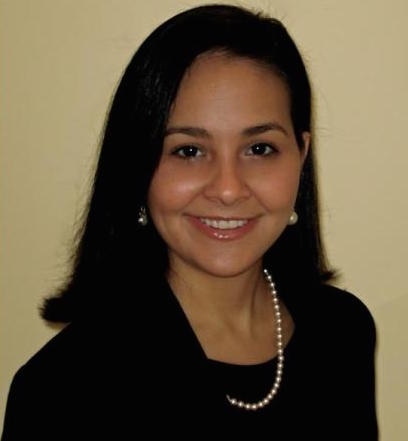Harvard Latino Researcher Discovers a New Source of Mercury Pollution
Submitted on 26 June 2015 - 11:07am
This article is reproduced by CienciaPR with permission from the original source.
CienciaPR Contribution:
Original Source:
By:

Cambridge, MA, USA - An important new finding in environmental pollution has been published this week in an article authored by Puerto Rican researcher Adiari Vázquez-Rodríguez, who recently graduated from Harvard University in Cambridge, MA. The research shows that mercury in mineral form, once considered harmless, can constitute a public health threat. Surprisingly, the research revealed that some bacterial microorganisms can "eat mineral mercury". In the process, these microorganisms not only dissolve but also evaporate mercury to the atmosphere.
This finding drastically alters how we think about mercury contamination. “We used to think that mercury-pollution was innocuous in areas where mercury was found as a mineral called mercury sulfide. It was thought that because mercury was trapped in that mineral it could not escape to any surrounding water bodies or air. Now, following this research, we understand that this is not the case, and that we have to pay more attention to these mercury-polluted areas as they pose a potential threat to human health,” says Dr. Adiari I. Vázquez-Rodríguez a Ph.D. graduate from the Harvard School of Engineering and Applied Sciences.
Dangers of Mercury
Mercury is a toxic metal and a neurotoxin that can interfere with neurobiological development in children. In the United States, approximately half a million children have been exposed to high levels of mercury that can negatively interfere with their development.
Most of the mercury pollution released from human activities is released into the air. This mercury contamination results from fossil fuel combustion such as that in coal-fired power plants, mining, cement production, and solid waste incineration. The mercury vapor released into the air by these activities can be carried long distances with the wind, even crossing from one hemisphere to another. This mercury eventually settles down, in oceans for example, where it accumulates in fish and other marine organisms. This toxic metal then accumulates in large fish as they eat smaller fish containing mercury. This means that large marine predators can have dangerously high mercury concentrations in their tissues. As a result, when we consume large marine fish such as shark, swordfish and tuna, we may be consuming high quantities of mercury.
Mercury pollution is a global issue as emissions from one country can negatively impact the population and environment in distant countries. As a result in 2013, 140 countries ratified an international United Nations treaty for the control of mercury emissions. The treaty recognizes the importance of controlling emissions of this pollutant, similarly to how the Kyoto Protocol took an important step towards controlling greenhouse gas emissions.
Prestigious Scholarship
Dr. Vázquez-Rodríguez completed her Bachelor of Science, Masters and Ph.D. in Environmental Sciences and Engineering at Harvard University, where she was advised by Dr. Colleen Hansel. Vázquez-Rodríguez was awarded a competitive graduate fellowship by the National Science Foundation (NSF). The NSF fellowship recognizes and supports outstanding graduate students in science, technology, engineering, and mathematics who demonstrate potential to advance knowledge in their field while benefiting society and becoming global leaders. Past fellows include numerous Nobel Prize winners, U.S. Secretary of Energy, Steven Chu, and Google co-founder, Sergey Brin.
"Thanks to this grant I had the flexibility to perform the research I am passionate about with fewer financial limitations. Also thanks to this and other scholarships, I had the opportunity to present my work and promote Latino research at international conferences in Montreal, Prague and Edinburgh, for example."
Varied Research
Dr. Vázquez-Rodríguez developed this research project as a Ph.D. student at the School of Engineering and Applied Sciences at Harvard, but this work was performed in numerous laboratories and facilities such as the Department of Energy government labs, the Harvard School of Public Health, and the Woods Hole Oceanographic Institute (affiliated with MIT), among others.
"My Ph.D. work took me from Harvard to an electron accelerator in California, the Smithsonian National Museum of Natural History laboratories in Washington D.C., and even biotechnology laboratories in Switzerland. It has truly been a ride."
Science Accessible to the Public
The work was published last June 23 in the journal Frontiers in Microbiology. The "Frontiers in" journal series, based in Switzerland, is part of an Open Science platform, whose mission is to increase the scope and impact of scientific findings by providing the general public with open and free access to these articles. Frontiers is one the largest and fastest-growing open-access publishers. It is supported by over 160,000 leading researchers worldwide, has already published 25,000 peer-reviewed articles across 50 journals, which receive 6 million views per month.







